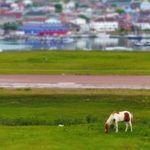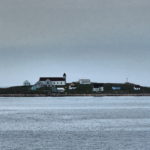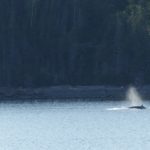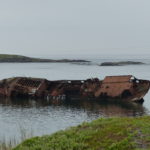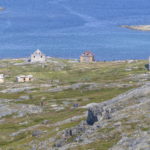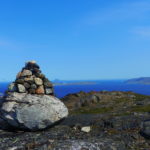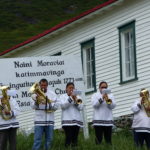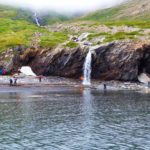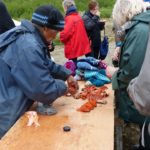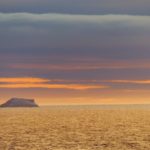Exploring the East Coast of Canada has always been on my bucket list. So when I got the opportunity this past July to explore Newfoundland and Labrador on an expedition cruise ship, needless to say I was over the moon with excitement. Adding to the excitement was that we would be sailing on the Ocean Endeavor, a 198 passenger expedition vessel with all the comforts you could ask for to explore some of Canada’s most remote places.
The expedition started in St. John’s, Newfoundland and took us through Gros Morne National Park in Newfoundland, then Torngat Mountains National Park in Labrador and ended in Kuujjuaq, Quebec.
The Itinerary
Our full itinerary was 13 days and included stops almost everyday where we had the opportunity to get off the ship and tour the area either by zodiac, bus or by foot. Unfortunately, we were not able to get off the ship on day 6 due to large swells that prevented the staff from being able to load passengers into the zodiac’s, but other than that we were able to get off and explore every day.
Day 1: Saint Pierre, France
Day 2: South Coast, Newfoundland
Day 3: Gros Morne National Park
Day 4: Red Bay
Day 5: St. Anthony & L’Anse aux Meadows
Day 6: Wonderstrands, Mealy Mountains National Park Reserve (At Sea)
Day 7: Nain
Day 8: Hebron
Day 9-11: Torngat Mountains National Park
Day 12: Kangiqsualujjuaq
Day 13: Kuujjuaq, Québec
Our first stop on this expedition was actually not even in Canada! Saint Pierre and Miquelon are located just off of Newfoundland’s south coast and are in fact, part of France. The narrow streets and colourful homes gave the islands a very European feel, while still resembling Newfoundland. We even got to watch part of a soccer…or “football” match to really give you the feeling that you were in Europe.
The next few days were made up of visiting three UNESCO world heritage sites. We sailed up the inside coast of Newfoundland, stopping at Woody Point in Gros Morne National Park, home of the famous Tablelands, which have a remarkable resemblance to the surface of Mars. Then onto Red Bay and Saddle Island on the south coast of Labrador where we really got the opportunity to learn about the 16th century Basque Whaling stations. From there we headed to the northern tip of Newfoundland to visit L’Anse aux Meadows, an 11th century Viking settlement and remains as an interpretive centre today.
We then cruised north on the Labrador Sea, into Nunatsiavut, a much more rugged and remote region. Because the weather was rough on day 6 of the expedition, we unfortunately were not able to get of the ship at Mealy Mountains National Park Reserve but thankfully this was the only day we were stuck on the ship. The staff arranged a series of presentations for the day for those who wanted to attend, and some passengers were happy to take the day to relax in one of the ship’s common areas. After that we carried on further north up the coast, stopping in Nain, where we were greeted by what seemed like the entire community and treated to music and dancing in the local Moravian church and the community centre. It was such a warm welcome and it really showed how excited they were to have us there visiting their home. The next day we carried on to Hebron, which was once a Moravian mission and was abandoned in 1959 and its Inuit residents were controversially resettled into other communities. The remains of some of the buildings still stand there today but are a prominent reminder of what happened to the people of that community.
The next few days were spent sailing through Torngat Mountains National Park, and what was most definitely the highlight of the trip for me (and many others onboard the ship). Because there is no road access, getting to the park by expedition cruise is one of the only ways that it is accessible (and depending on your purchased cabin category, probably the least expensive way too). The landscapes were probably some the most impressive I have ever seen. Beautiful fjords and ancient mountains surrounded us, the landscapes made it impossible to take a bad picture, I definitely impressed myself with some of the shots I was able to get. We stopped at Ramah Bay and Eclipse Bay, where we got the opportunity to tour the area by zodiac, past lonely glaciers and down rivers to waterfalls. This was by far the highlight of the trip.
We even had a Program Manager for Google onboard that was mapping some of our hikes, territories that had not yet been marked by Google but he was collecting footage to add that to Google Maps. So when you are checking out any of the places we stopped throughout our expedition, you are truly seeing the exact hikes that we did on our trip.
The last couple of days on our expedition found us sailing into Ungava Bay, in Nunavik, Quebec with a visit to Kangiqsualujjuaq before our final stop in Kuujjuaq, Quebec. Kangiqsualujjuaq treated us to a performance of dancing and throat singing in the local school. They even had several tents set up to allow us to try local food and buy some handmade souvenirs. This warm welcome to the community was a great way to end off an amazing trip to places that I had not even heard of before but feel fortunate that I have now been to.
The Wildlife
In addition to the majestic landscapes that surround you, there was always the opportunity to see plenty of wildlife. There were Minke whales in the bay off the coast of Newfoundland, Polar Bear and Black Bear along the shores in Torngat Mountain National Park, one of the only places that these bears actually co-exist. And plenty of birdlife throughout the entire trip. The team on Naturalist guides onboard are always around to point the wildlife out and teach you about what you are seeing.
Life Onboard
Life onboard an expedition cruise is always interesting. Whether you are reading a book in the library, listening to a presentation by one of the many researchers, or storytellers onboard, just sitting on the deck taking in the incredible scenery or enjoying a night cap in the lounge while listening to live music by either one of the staff, the local artists, or even a fellow passenger; jam nights happened often and would always draw a crowd.
Food was great. The buffet for breakfast offered a spread of both hot and cold options from cheese and fruit, to eggs and bacon. The lunch buffet and the a la carte dinner menu changed daily. The wait staff were great, always remembering the familiar faces of the passengers. Dinner sometimes took a little long, but it was a great opportunity to sit with your fellow passengers and reflect back on your day.
Expedition Cruises are for Everyone
Our expedition included passengers of all ages, from children travelling with their parents, to young adventurous adults, to retirees and seniors who now have the time to see those places that have been on their bucket lists. The daily activities off the ship usually would include hikes for every ability and for those who didn’t want to hike at all you could stay in the zodiacs or even on the ship. There were always passengers taking part in each of these options.
Expedition cruises really give you the opportunity to see parts of the world that you just cannot access by ocean liner. They get you into more remote areas, on smaller ships, with a team of specialists that are there to teach you about everything from the ecosystems, to the wildlife, to the geology and archeology, to the culture and history about absolutely every destination that you visit. The small ship also means less passengers, so you really get to know your fellow travellers, their stories and reasons why they travel. What is so special about this is that you truly get an appreciation for the trip that you are on, learning of everyone’s reasons for booking that particular expedition. It definitely left me feeling fortunate that not only I was I able to visit and learn about this remote part of the world, but I was able to share that experience with them as well.
The Newfoundland and Wild Labrador itinerary is not offered every year, but there are 2 options that you can do (back to back if you have the time) that will allow you to see much of the same itinerary.








